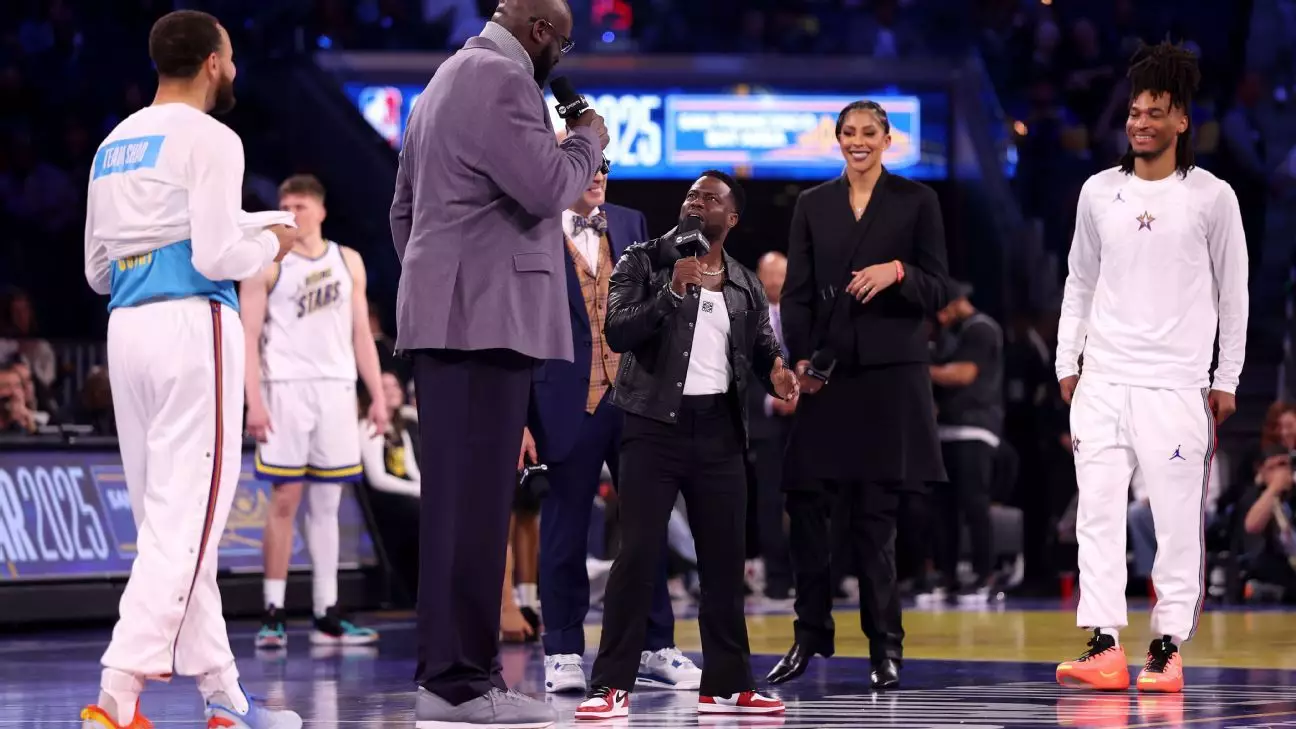The NBA All-Star Game has long been a staple of basketball culture, a spectacle where fans revel in the talents of their favorite players. However, with the introduction of a new tournament format during the latest event, critical voices emerged, and the reception was anything but uniform. In the wake of this change, players expressed mixed feelings, particularly about the excessive breaks that interrupted the flow of the game.
Gone are the days of the customary East vs. West rivalry; the NBA opted for a fresh four-team, single-elimination format capped by a target score of 40 points for each round. Teams were curated by prominent figures within basketball media, with Charles Barkley, Kenny Smith, and Shaquille O’Neal taking the helm for three of the squads. The fourth team, led by Candace Parker, included players from the Rising Stars event. While the novelty of a new format initially intrigued fans and observers alike, this excitement was tempered by significant frustrations articulated by the players.
Many athletes expressed dissatisfaction with the frequency and length of interruptions that punctuated the gameplay. For instance, Trae Young, a member of Chuck’s Global Stars, criticized the numerous breaks, stating, “I didn’t like the breaks. The games were so short.” His sentiment was echoed by other athletes, indicating a widespread acknowledgment that while the new format had its merits, the execution left much to be desired. Such interruptions, which included comedic interludes from entertainers like Kevin Hart, not only stymied the game’s rhythm but also seemed to strain the players’ competitive spirit.
Jaylen Brown weighed in on the negative effects of these pauses, noting, “It’s not ideal to stop like that if you want guys to be physical.” The call for an uninterrupted playing experience raised a salient question: How can the NBA balance entertainment with genuine competition? This dilemma speaks volumes to the essence of sporting events, where the admiration of athleticism and collective teamwork is often obscured by excessive embellishments.
The championship encounter, which saw Shaq’s OGs triumph over Chuck’s Global Stars, demonstrated how enthusiasm and competitiveness can sometimes shine through, even amid frustrations. However, the nearly twenty-minute break honoring the TNT broadcast crew threatened to overshadow the game itself—a situation that left a sour taste for players focusing on the championship. Gilgeous-Alexander’s comment that he would prefer “to play without breaks” underlined the necessity of maintaining a game’s integrity over manufactured entertainment.
The performance of notable players like Stephen Curry and Jayson Tatum showcased their abilities in a more competitive light than what many anticipated, yet the pondering over whether such moments could feel more organic was prevalent. Stephen Curry himself highlighted that the changes made were essential to reinvigorating the All-Star weekend, stating, “We needed new life… something kind of unexpected.” His insight underscores a critical point: while innovation in formats is necessary, how well these changes are executed can drastically influence player performance and spectator enjoyment.
Additionally, the absence of key figures like LeBron James, Giannis Antetokounmpo, and Anthony Edwards cast a shadow over the entire event. Their absence invited further contemplation about the significance of the All-Star Game, questioning whether the tournament format genuinely engaged elite talent or whether it diluted the experience by featuring players whose episodes in the All-Star Game were vastly different from past legends. As Draymond Green pointed out regarding the inclusion of first- and second-year players, it raises the question: What is the purpose of the All-Star Game if it doesn’t showcase its absolute best?
As the dust settles on this year’s NBA All-Star Game, it becomes increasingly clear that the event requires further evolution. The goal of producing a thrilling exhibition game must align with the expectations of both players and fans. While the tournament format introduced innovative elements to the All-Star festivities, the numerous stoppages and the absence of premier athletes illuminated the existing tension between entertainment and competition.
To preserve the essence of the NBA All-Star Game, future iterations must heed the concerns of the players while maintaining the excitement that fans expect. The challenge ahead is to strike a delicate balance that honors the game’s history while embracing necessary change, ensuring that every future All-Star Game is a showcase of basketball excellence. In doing so, the NBA can remain at the forefront of celebratory sports, uniting talents and fans under the banner of basketball in its finest form.

